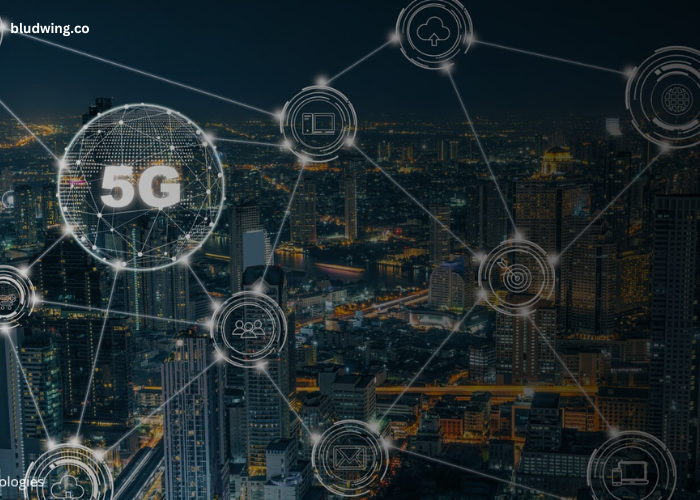The power of 5G lies in its ability to transform how we communicate, interact, and connect with the world around us. As the next evolution in mobile network technology, 5G promises to offer speeds and connectivity that will far surpass what we have experienced with 4G. But it’s not just about faster internet; the true potential of 5G lies in its ability to unlock a new world of innovation, smart technologies, and seamless communication.
5G is more than just a network upgrade—it is the foundation for the future of industries ranging from healthcare to entertainment, transportation to manufacturing. By offering faster speeds, lower latency, and greater capacity, 5G will revolutionize industries, increase efficiency, and enable previously unimaginable possibilities. In this article, we will explore how the power of 5G is shaping the future and how it’s unlocking innovation across various sectors.
Key Points:
- 5G offers incredibly fast speeds and low latency, enabling seamless connectivity.
- 5G will support the growth of smart technologies and connected devices, including the Internet of Things (IoT).
- Industries like healthcare, transportation, and entertainment will experience major innovations driven by 5G technology.
How Will 5G Change the Way We Connect?
One of the most impactful aspects of 5G is its ability to drastically improve connectivity. While 4G was a major leap forward in mobile communication, 5G takes this further by offering not just faster speeds but also a more reliable, efficient, and scalable network.
1. Ultra-Fast Data Speeds
5G’s primary selling point is its ultra-fast data speeds. With speeds up to 100 times faster than 4G, users will be able to download movies, games, and other large files in a matter of seconds. This improved speed will make streaming high-quality videos, including 4K and even 8K content, smoother and more accessible. For businesses, the enhanced speeds will allow for seamless video conferencing, better cloud computing, and more efficient collaboration.
For example, streaming a high-definition movie on a mobile device with 5G will feel like watching content directly from a server, without any buffering or delay. This will change how we consume content on mobile devices, making it more convenient and enjoyable than ever before.
2. Low Latency and Real-Time Communication
Another significant advantage of 5G is its reduced latency, or the delay in sending data across the network. While 4G networks have a latency of around 50 milliseconds, 5G can reduce this to just 1 millisecond, making communication almost instantaneous. This low latency is crucial for real-time applications such as online gaming, virtual reality (VR), and augmented reality (AR), where even the slightest delay can disrupt the experience.
For instance, remote-controlled drones, robotics, and autonomous vehicles will benefit greatly from 5G’s ultra-low latency. These technologies rely on real-time feedback and quick responses, and 5G’s ability to reduce lag will make these applications safer and more efficient.
3. Greater Network Capacity
5G is designed to support a higher number of connected devices compared to previous networks. With the rise of the Internet of Things (IoT), more devices are being connected to the internet—everything from smart home appliances to wearable tech and industrial equipment. 5G’s increased capacity allows for a greater number of devices to communicate with each other without overloading the network.
In cities, this will mean improved performance for smart infrastructure, such as traffic lights, surveillance cameras, and streetlights that can communicate in real time to improve efficiency and safety. The increased network capacity of 5G will ensure that these devices can operate seamlessly, even in densely populated areas.
How is 5G Transforming Key Industries?
The impact of 5G technology will be felt across a wide range of industries. From healthcare to manufacturing, 5G will drive innovation, improve efficiency, and enable new business models. Let’s explore how 5G is transforming some of the most important sectors.
1. Healthcare: Telemedicine and Remote Surgery
One of the most promising areas for 5G technology is in healthcare. With 5G’s ability to deliver ultra-low latency and high-speed data, telemedicine and remote surgeries will become more viable and effective. Doctors will be able to perform surgeries remotely using robotic systems that are controlled in real time via 5G networks. This will be a game-changer for patients in remote or underserved areas who need access to specialized care.
Additionally, 5G can enable real-time health monitoring through wearable devices, allowing healthcare providers to track patient data continuously and respond to emergencies more quickly. This will improve overall patient care and outcomes while reducing healthcare costs.
2. Transportation: Autonomous Vehicles and Smart Cities
The transportation sector stands to gain immensely from 5G technology. Autonomous vehicles, or self-driving cars, rely on real-time data communication between vehicles and infrastructure. 5G’s low latency and high-speed data transfer will allow autonomous vehicles to make split-second decisions, improving safety and reducing accidents.
In addition to autonomous vehicles, 5G will play a critical role in the development of smart cities. By integrating connected infrastructure, such as traffic lights, parking systems, and public transportation, cities can become more efficient, reducing congestion, pollution, and energy consumption. Real-time traffic updates, optimized routes for buses, and intelligent streetlights that adjust based on pedestrian activity are just a few examples of how 5G will enhance urban living.
3. Entertainment: Enhanced Immersion with AR/VR
5G technology will also revolutionize the entertainment industry. With faster data speeds and lower latency, 5G will make virtual reality (VR) and augmented reality (AR) experiences more immersive and accessible. 5G will allow users to experience AR and VR in real time, without the need for bulky hardware or lag. Whether it’s gaming, live event streaming, or interactive media experiences, 5G will provide smoother, more immersive content.
For example, in gaming, 5G will support real-time multiplayer experiences without latency issues, making gaming more enjoyable and competitive. Similarly, live sports broadcasts could incorporate real-time AR, allowing viewers to interact with the content in new ways.
4. Manufacturing: Industry 4.0 and Smart Factories
Manufacturing will undergo a significant transformation with the advent of 5G. The concept of Industry 4.0, which involves the integration of smart technologies in the manufacturing process, relies heavily on fast, reliable communication. 5G’s high-speed data transfer and low latency will allow for seamless integration of robots, sensors, and machines in factories, enabling real-time monitoring and adjustments to production lines.
5G will also support the use of augmented reality in manufacturing. For example, workers will be able to wear AR glasses that provide real-time instructions, helping them perform tasks more accurately and efficiently. This will improve productivity, reduce errors, and enhance workplace safety.
What Challenges Does 5G Face?
Despite its immense potential, the rollout of 5G comes with challenges. Let’s take a look at some of the hurdles that must be overcome.
1. Infrastructure and Deployment Costs
The deployment of 5G requires significant infrastructure upgrades, including the installation of small cells and fiber-optic cables. This is a costly and time-consuming process, particularly in rural and underserved areas. Telecom companies and governments will need to collaborate to ensure that 5G networks are built out efficiently and equitably.
2. Security and Privacy Concerns
As 5G enables more connected devices and the exchange of sensitive data, cybersecurity will become a critical concern. The increased number of connected devices increases the potential for cyberattacks and data breaches. Ensuring that 5G networks are secure and that data privacy is protected will require robust security measures.
3. Spectrum Availability
5G requires access to a wide range of radio frequencies, or spectrum, to operate effectively. The availability of spectrum is limited and must be carefully managed to prevent interference and ensure reliable performance. Governments and regulatory bodies will need to work together to allocate spectrum efficiently for 5G networks.
Conclusion: Unlocking the Future with 5G
The power of 5G lies in its ability to unlock new possibilities, from faster connectivity to real-time communication, smarter cities to innovative industries. As 5G technology continues to evolve, it will redefine how we live, work, and interact with the world.
Although there are challenges to overcome in the rollout of 5G, the potential benefits are vast and transformative. The revolution in connectivity and innovation driven by 5G will unlock countless opportunities for businesses and consumers alike, paving the way for a smarter, more connected future.
FAQ’s
1. What makes 5G different from 4G?
5G offers much faster speeds, lower latency, and greater capacity, enabling faster data transfer and supporting more connected devices compared to 4G.
2. How does 5G improve healthcare?
5G enables remote surgeries, real-time health monitoring, and improved telemedicine services, making healthcare more accessible and efficient.
3. What industries will benefit from 5G?
Industries like healthcare, transportation, entertainment, manufacturing, and smart cities will all see significant improvements from 5G technology.
4. Will 5G improve autonomous vehicles?
Yes, 5G’s low latency and fast data transfer will enable real-time communication between vehicles and infrastructure, improving safety and efficiency in autonomous vehicles.
5. What are the main challenges to 5G rollout?
Challenges include infrastructure costs, security and privacy concerns, and the availability of spectrum to support 5G networks.




